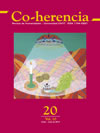From the history of art as a current possibility of humanism in Julius von Schlosser and Giulio Carlo Argan
Main Article Content
Keywords
History of art, historian, humanism, culture, art
Abstract
The complex world of thought and sensitivity in the sphere of contemporary art has entailed the revision and exclusion of disciplines aimed at providing a model to explain and conceptualize reality. Art history, as one such discipline, has had many of its contributions questioned from Gombrich’s epistemological reformulation to the postmodern discourses, which extol the death of the author, the post-structuralist idea of tradition as a textual phenomenon, and the declaration of the death of history as a consequence of the hybridization of disciplines and of other branches of human knowledge. Nevertheless, it can be demonstrated that proposals as those by Julius von Schlosser and Giulio Carlo Argan enclose reflections and methodological aspects which can help us face the task of understanding and visualizing the mediating role of historians in the culture of sensitivity, and the art modulations that have resulted from the blows of history and that, in turn, have shaped both art and art history into what they are or can be to us today.
Downloads
Download data is not yet available.
References
Argan, Giulio Carlo (1964). La Europa de las capitales 1600-1700. Barce-lona: Skira Carroggio.
Foucault, Michel (1992). El orden del discurso. Buenos Aires: Tusquets Edi-tores.
Gombrich, Ernst (1981). Ideales e ídolos. Barcelona: Gustavo Gili.
Hauser, Arnold (1969). Historia social de la literatura y el arte. Madrid: Edi-ciones Guadarrama.
Koselleck, Reinhart (2004). Historia / historia. Madrid: Trotta.
Starobinski, Jean (1988). 1789, Los emblemas de la razón. Madrid: Taurus.
Schlosser, Julius von (1981). El arte de la Edad Media. Barcelona: Ediciones Gustavo Gili.
Wölfflin, Heinrich (1952). Conceptos fundamentales de la historia del Arte. Madrid: Espasa-Calpe.
Foucault, Michel (1992). El orden del discurso. Buenos Aires: Tusquets Edi-tores.
Gombrich, Ernst (1981). Ideales e ídolos. Barcelona: Gustavo Gili.
Hauser, Arnold (1969). Historia social de la literatura y el arte. Madrid: Edi-ciones Guadarrama.
Koselleck, Reinhart (2004). Historia / historia. Madrid: Trotta.
Starobinski, Jean (1988). 1789, Los emblemas de la razón. Madrid: Taurus.
Schlosser, Julius von (1981). El arte de la Edad Media. Barcelona: Ediciones Gustavo Gili.
Wölfflin, Heinrich (1952). Conceptos fundamentales de la historia del Arte. Madrid: Espasa-Calpe.




